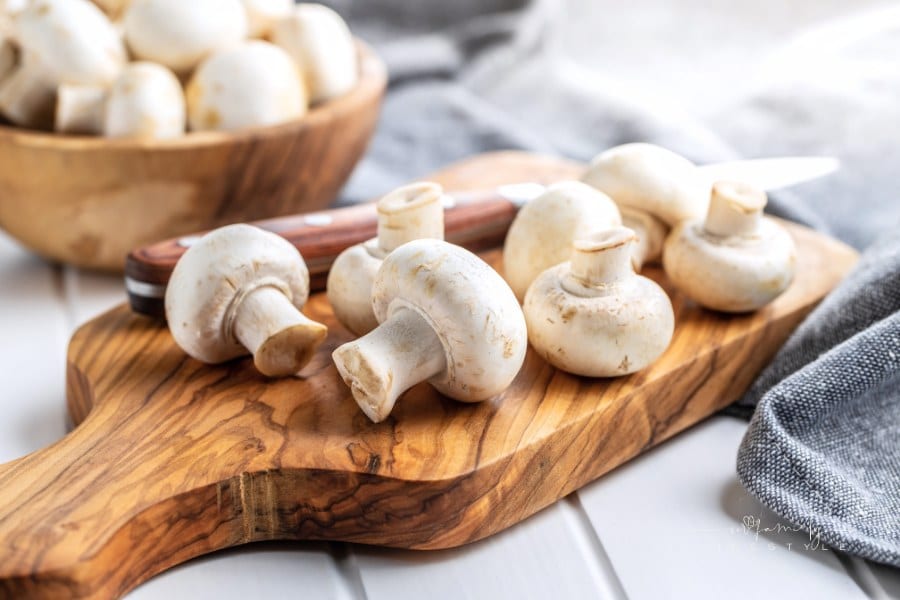Bringing the Garden Inside: A Family Guide to Growing Edible Mushrooms
Creating an indoor mushroom garden bridges family time with the joy of cultivating fresh, edible delights.
Plus, it’s not rocket science. The likes of button and shiitake mushrooms, for instance, aren’t just easy to grow indoors but serve as nutritious additions to your meal times, too!
This quick guide simplifies the process into digestible steps, guaranteeing a fun learning experience for everyone involved.

Gardening Edible Mushrooms Indoors: A Family Guide
Ready to transform your kitchen or living space with a touch of fungal enchantment? This post is your starting point toward harvesting home-grown mushrooms alongside your loved ones.
Choose a Desirable Mushroom Variety
Embarking on your mycological venture begins with selection. Not all mushrooms share the same growing conditions or culinary appeal.
Starting with button mushrooms offers a familiar taste and a forgiving growth pattern, perfect for novices. On the other hand, shiitake mushrooms add a gourmet twist and still cater to first-time growers.
Consider what your family enjoys eating and explore varieties accordingly before starting your food garden. Remember, each mushroom’s unique flavor is matched by its distinctive growing needs—align these with your home environment to set the stage for fungal success.
More Edible Mushroom Varieties Easy-To-Grow Indoors
- Oyster Mushrooms: Thrive in a variety of mediums and are particularly resilient. Their rapid growth makes them an instant gratification choice for new gardeners.
- Enoki Mushrooms: Favor cooler temperatures and higher humidity, offering a uniquely crunchy texture and a boost of visual interest with their long stems.
- Portobello Mushrooms: Essentially mature button mushrooms, they require a bit more space to grow but are just as manageable, yielding hearty, meaty caps ideal for grilling.
- Lion’s Mane: Known for its distinctive cascading spines, this variety supports cognitive health and requires more vertical space to showcase its full glory.
Setting Up Your Growing Space
The next step is to carve out a niche in your home where these spores can flourish. For starters, mushrooms thrive in cool, moist environments with indirect light—think of emulating the understory of a forest.
A simple setup could be a shelf in your basement or a corner in your laundry room that remains consistently dim and cool.
Also, investing in the right substrate (the material on which mushrooms grow) is crucial for their development.
Research whether wood chips, straw, or soil is best suited for your chosen variety, and ensure it’s free of contaminants for healthy mushroom growth.
Maintaining Humidity and Temperature
Consistency is key when nurturing your indoor mushroom patch. Mushrooms need steady conditions to prosper—a balance that’s not too wet, yet never dry.
A dose of daily misting can maintain the required humidity without over-saturating the substrate. Some growers find that humidity tents or trays streamline this process.
Temperature also plays a pivotal role, with most edible varieties favoring a range between 55-70°F (13-21°C).
If you notice slow growth or no growth at all, adjust the temperature incrementally
A stable environment encourages your mushrooms to yield bountifully, laying the groundwork for success in your fungal garden.
Making it Easy, and Fun for the Family
Fostering an atmosphere of wonder and education can make growing mushrooms as entertaining as it is enlightening.
Start by integrating learning moments like listening to podcasts or articles on how to grow portobello mushrooms, to spark curiosity among family members.
These resources become the soil from which discussions bloom, engaging everyone in the growth process.
Moreover, make it a collaborative project by assigning age-appropriate tasks—from misting duties for younger children to substrate preparation for older ones.
Celebrate each milestone together, be it the first sprout or harvest day, turning these moments into cherished memories.
Personal involvement fosters pride in the shared endeavor and lays the foundation for continual growth—in both gardens and relationships.
In winding up
Incorporating an edible mushroom garden into your home is a fantastic fusion of food, fun, and family learning.
With each step from spore to harvest, you’re not just growing mushrooms; you’re cultivating lifelong skills and memories.
So why wait? Begin your indoor gardening adventure today and savor the fruits—or fungi—of your labor.


